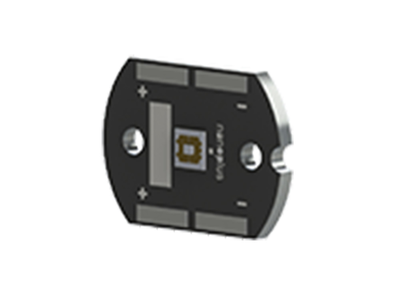

nanoplus offers mid-infrared LEDs (MIR LED or ICLED) at any wavelength between 2000 nm and 2500 nm.
|
parameters
|
symbol
|
unit
|
minimum
|
typical
|
maximum
|
|---|---|---|---|---|---|
|
parameters
operating wavelength (at Top, Iop) (~ 20 nm peak-change per 10°C temperature-change) |
symbol
λop |
unit
nm |
minimum
|
typical
Please specify to 100 nm |
maximum
|
|
parameters
operating current |
symbol
Iop |
unit
mA |
minimum
150 |
typical
200 |
maximum
|
|
parameters
operating voltage |
symbol
Vop |
unit
V |
minimum
|
typical
1.7 |
maximum
|
|
parameters
spectral bandwidth (FWHM) |
symbol
Δ λ |
unit
nm |
minimum
|
typical
170 |
maximum
|
|
parameters
optical cw output power (at λop) (power dissipation 1W [heatsink required]) |
symbol
Pop |
unit
mW |
minimum
2 |
typical
3 |
maximum
|
|
parameters
operating case temperature (non-condensing) |
symbol
TC |
unit
°C |
minimum
-10 |
typical
|
maximum
+50 |
|
parameters
storage temperature (non-condensing) |
symbol
TS |
unit
°C |
minimum
-10 |
typical
|
maximum
+70 |



nanoplus mid-infrared LEDs show outstanding spectral and electrical properties.

Typical spectrum of a nanoplus 2.35 µm mid-infrared LED

Typical power, current and voltage characteristics of a nanoplus 2.35 µm mid-infrared LED
nanoplus MIR LEDs rely on the same technology as our very successful interband cascade lasers.The advantage over previous interband cascade LEDs can be attributed to stage grouping at one single antinode of the optical field and the usage of low absorbing substrates. For more insights into our technology please refer to our paper "High efficiency mid-infrared interband cascade LEDs grown on low absorbing substrates emitting >5 mW of output power" in the paper section.
